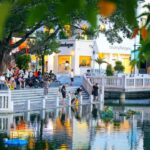
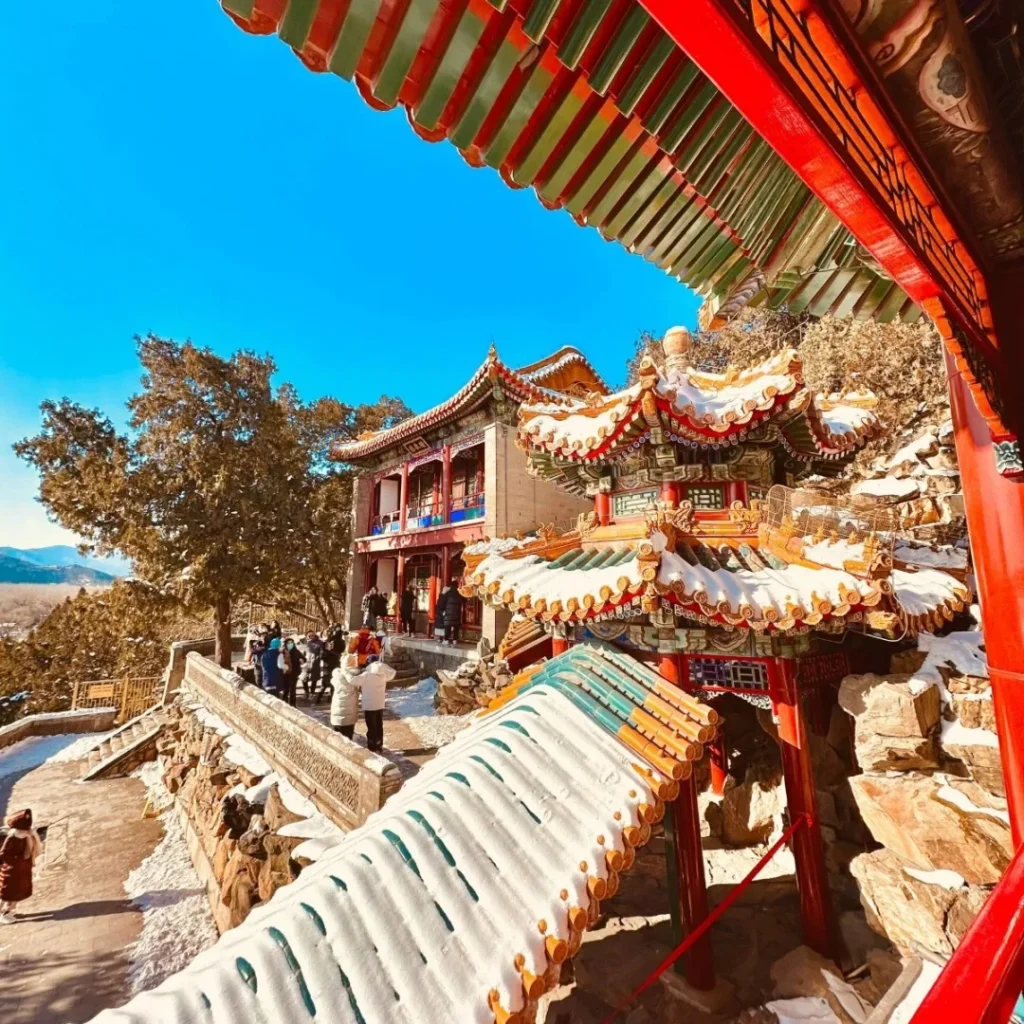
In the heart of Beijing, the Summer Palace stands as a testament to the grandeur of China’s imperial past. As winter descends upon the city, this magnificent royal garden transforms into a captivating wonderland. The waters of Kunming Lake, once rippling with gentle waves, now freeze into a vast, shimmering mirror of silver. The Seventeen-Arch Bridge lies serenely across the icy surface, while the golden-glazed Buddha Incense Tower atop Longevity Hill radiates an aura of splendor. The stone lions, blanketed in snow, exude an air of solemnity and majesty.
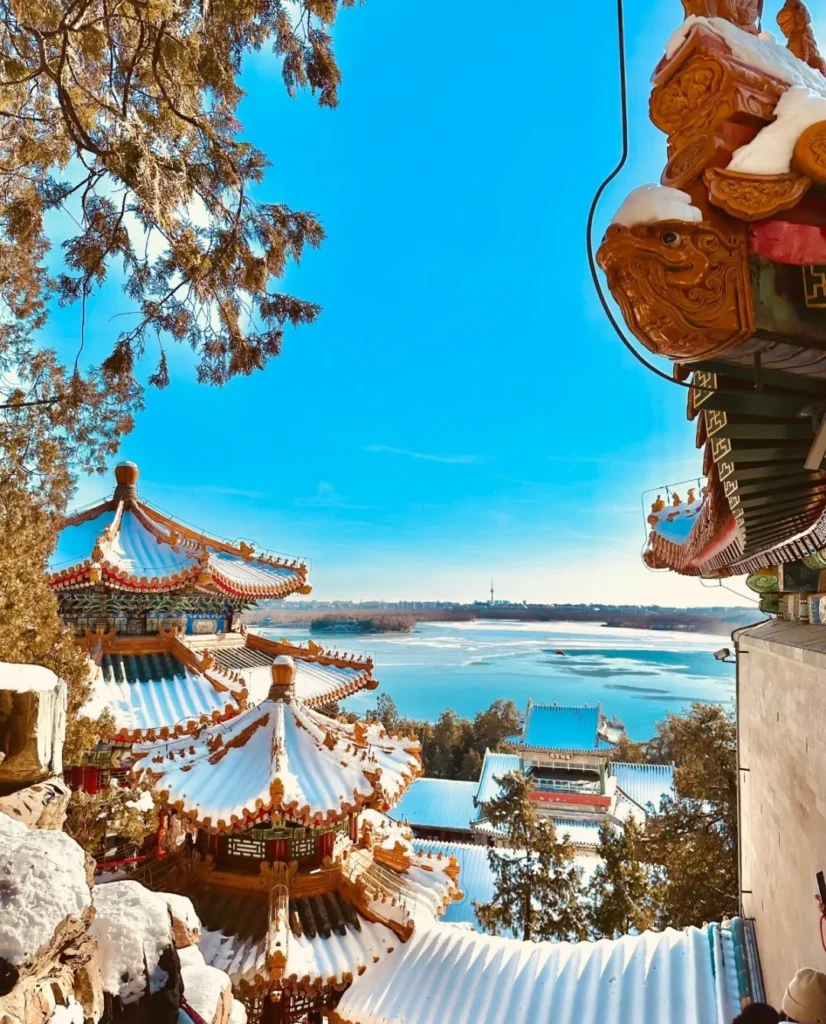
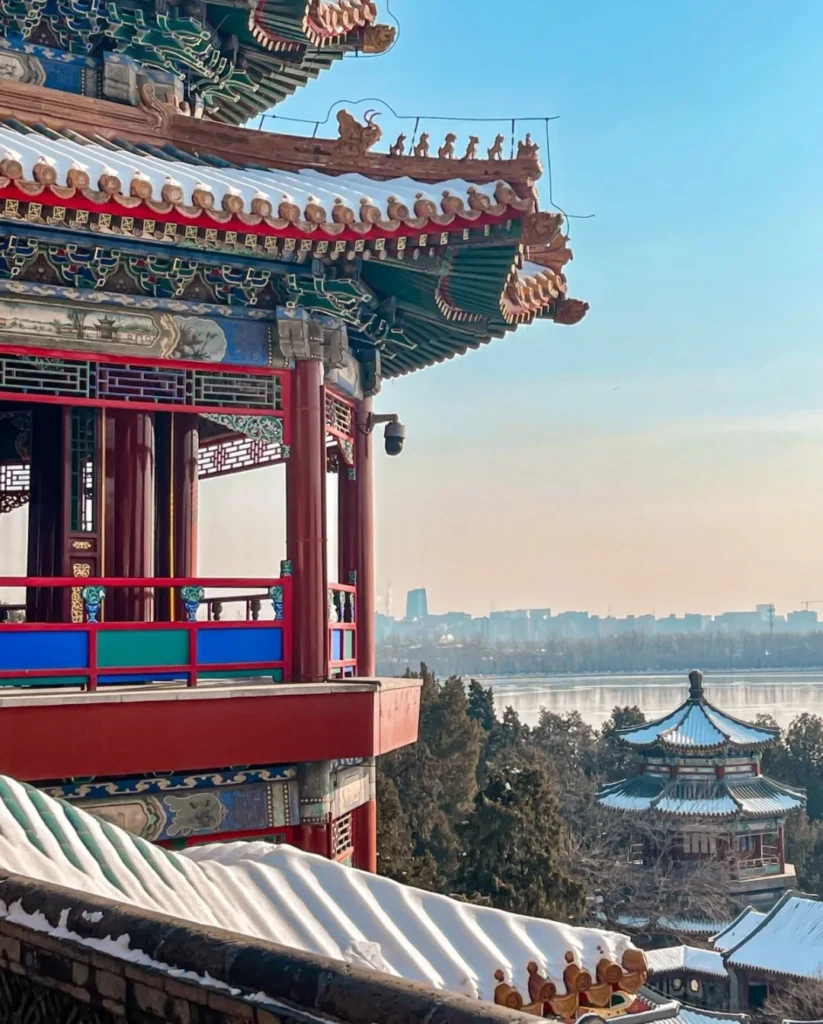
The Summer Palace, a household name among royal gardens, never fails to enchant visitors with its timeless allure. For those planning a visit to this iconic destination, now is the perfect opportunity to embark on a winter day trip. Take advantage of the exclusive winter package tours, such as the Temple of Heaven + Summer Palace + Old Summer Palace or the Prince Gong’s Mansion + Summer Palace + Old Summer Palace, led by professional guides who will accompany you on a classic one-day adventure.
The Historical Tale of the Summer Palace
Beyond its reputation as a symbol of Chinese garden art, how much do you know about the history of this imperial retreat? Interestingly, the Summer Palace was not always known by its current name.
The construction of the Summer Palace began during the reign of Emperor Qianlong in the Qing Dynasty. Initially, it was called the Garden of Clear Ripples (Qingyi Yuan). It was later rebuilt and renamed as the Summer Palace during the reign of Emperor Guangxu.

During Emperor Qianlong’s rule (1735-1796), he commissioned the creation of an imperial garden on the outskirts of the capital, nestled between Longevity Hill and Kunming Lake, to celebrate the birthday of his mother, Empress Dowager Chongqing. This garden was not only a tribute to the empress dowager’s longevity but also a bold experiment and innovation in garden art by Emperor Qianlong himself.

The design of the Garden of Clear Ripples ingeniously blended the delicate beauty of southern Chinese gardens with the grandeur of northern gardens, becoming a perfect convergence of the two distinct styles. It is said that Emperor Qianlong personally participated in the planning and design of the garden, making it a milestone in Chinese garden art at the time.
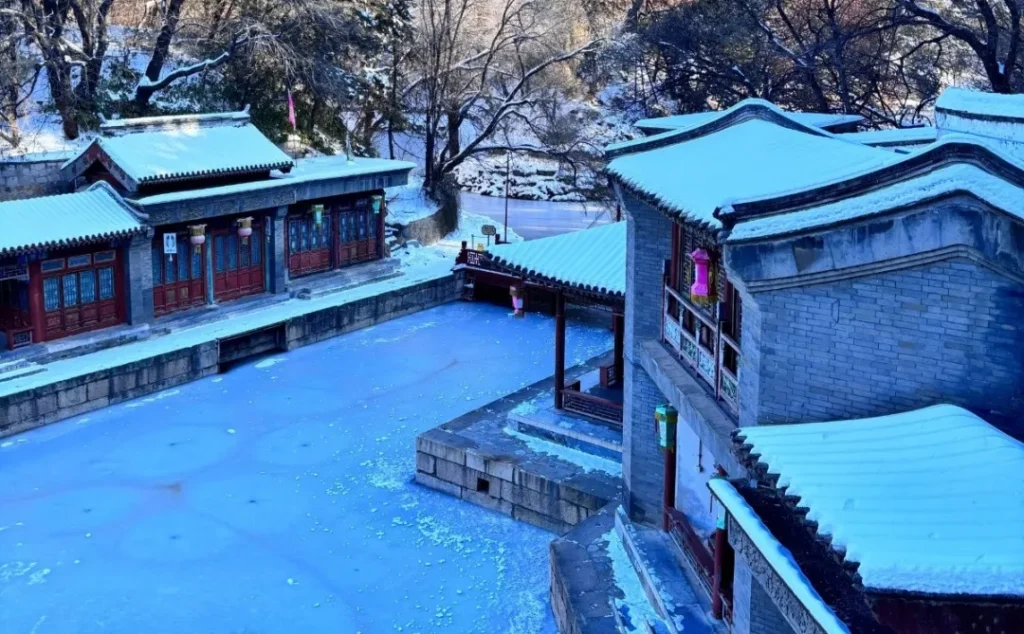
Unfortunately, the Garden of Clear Ripples suffered extensive damage during the Second Opium War in 1860 at the hands of the Anglo-French allied forces. In the late Qing Dynasty, when Empress Dowager Cixi was seeking a location to celebrate her 60th birthday, she turned her attention to the ruins of the Garden of Clear Ripples. She ordered the reconstruction of the garden and renamed it the Summer Palace.
Touring Routes
The touring routes of the Summer Palace vary depending on your entry point. Each route offers a different duration and set of attractions. Let’s take a look at which one suits you best!
Entering from the North Palace Gate
📍Route 1: Approximately 1.5 hours
North Palace Gate → Suzhou Street → Suyun Hall → City Gate → Hall of Dispelling Clouds → Long Corridor
📍Route 2: Approximately 2 hours
North Palace Gate → Suzhou Street → Suyun Hall → City Gate → Long Corridor → Hall of Dispelling Clouds → Hall of Happiness and Longevity → Garden of Virtue and Harmony → Hall of Benevolence and Longevity
📍Route 3: Approximately 2.5 hours
North Palace Gate → Suzhou Street → Tower of Buddhist Incense → Hall of Dispelling Clouds → Long Corridor → Hall of Happiness and Longevity → Yiyun House → Hall of Jade Ripples → Garden of Virtue and Harmony → Hall of Benevolence and Longevity
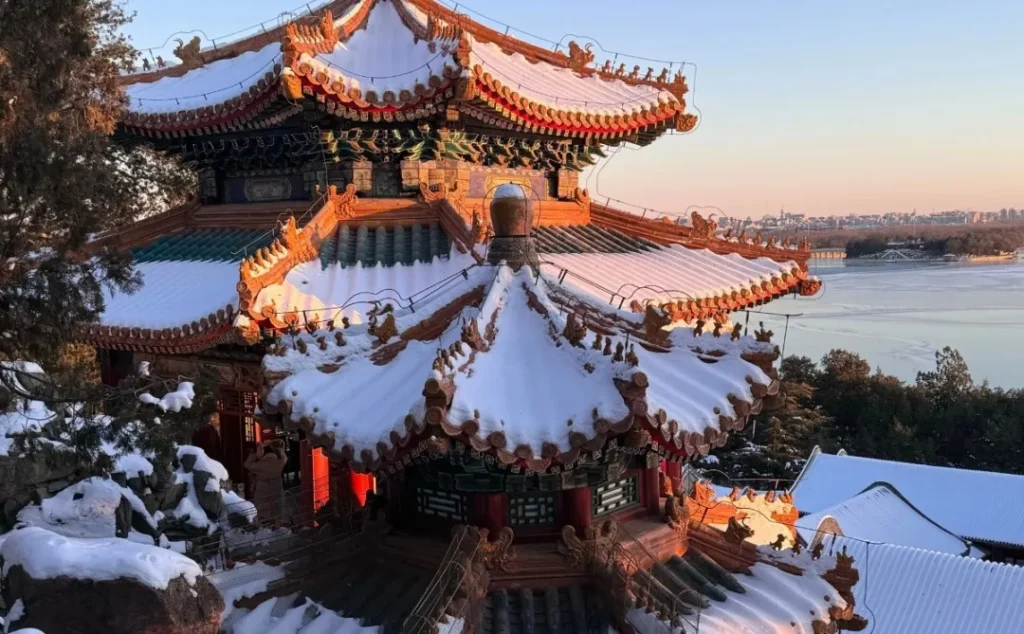
Entering from the New Palace Gate
📍Route 1: Approximately 1.5 hours
New Palace Gate → Bronze Ox → Wenchang Gallery → Hall of Benevolence and Longevity → Hall of Jade Ripples → Yiyun House → Hall of Happiness and Longevity
📍Route 2: Approximately 2 hours
New Palace Gate → Bronze Ox → Wenchang Gallery → Hall of Benevolence and Longevity → Garden of Virtue and Harmony → Hall of Jade Ripples → Yiyun House → Hall of Happiness and Longevity → Long Corridor → Hall of Dispelling Clouds
📍Route 3: Approximately 2.5 hours
New Palace Gate → Bronze Ox → Wenchang Gallery → Hall of Benevolence and Longevity → Garden of Virtue and Harmony → Hall of Jade Ripples → Yiyun House → Hall of Happiness and Longevity → Hall of Dispelling Clouds → Tower of Buddhist Incense → Suzhou Street
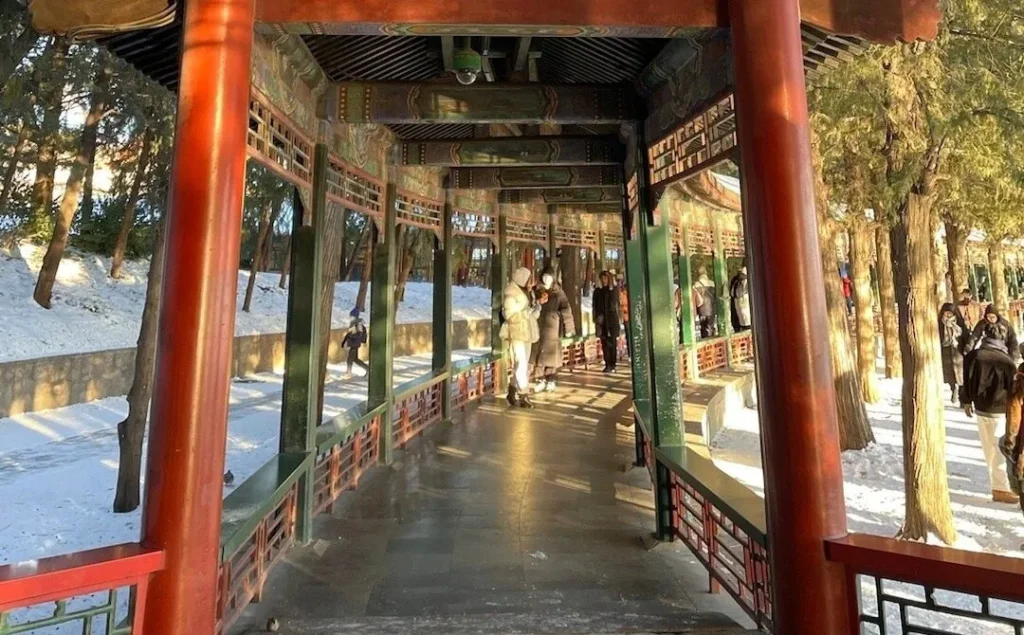
Entering from the East Palace Gate
📍Route 1: Approximately 1.5 hours
East Palace Gate → Hall of Benevolence and Longevity → Garden of Virtue and Harmony → Hall of Jade Ripples → Yiyun House → Hall of Happiness and Longevity → Long Corridor → Hall of Dispelling Clouds
📍Route 2: Approximately 2 hours
East Palace Gate → Hall of Benevolence and Longevity → Garden of Virtue and Harmony → Hall of Happiness and Longevity → Long Corridor → Hall of Dispelling Clouds → Suzhou Street
📍Route 3: Approximately 2.5 hours
East Palace Gate → Hall of Benevolence and Longevity → Garden of Virtue and Harmony → Hall of Jade Ripples → Yiyun House → Hall of Happiness and Longevity → Long Corridor → Hall of Dispelling Clouds → Tower of Buddhist Incense → Suzhou Street

Must-See Attractions
Long Corridor
The Long Corridor is one of the most famous structures in the Summer Palace, stretching an impressive 728 meters, making it the longest painted corridor in the world. The corridor is adorned with over 14,000 colorful paintings on both sides, depicting landscapes, flowers, birds, historical stories, and folk tales, providing visitors with a window into traditional Chinese culture.

Tower of Buddhist Incense
This building is not only a landmark of the garden but also a treasure of Buddhist art. Inside the Tower of Buddhist Incense, a massive bronze Buddha statue sits serenely, as if whispering a thousand years of Zen wisdom.

Marble Boat
Also known as the Boat of Qingyan, the Marble Boat appears as a colossal stone ship when viewed from the western shore of Kunming Lake. It is not actually floating on the water but firmly seated in its place. The boat derives its name from its ship-like shape, resembling a large vessel ready to set sail, yet it remains quietly moored by the shore.

South Lake Island
Located in the middle of Kunming Lake, the island features buildings such as the Dragon King Temple and Hanxu Hall, serving as the center for water-based sightseeing in the Summer Palace.
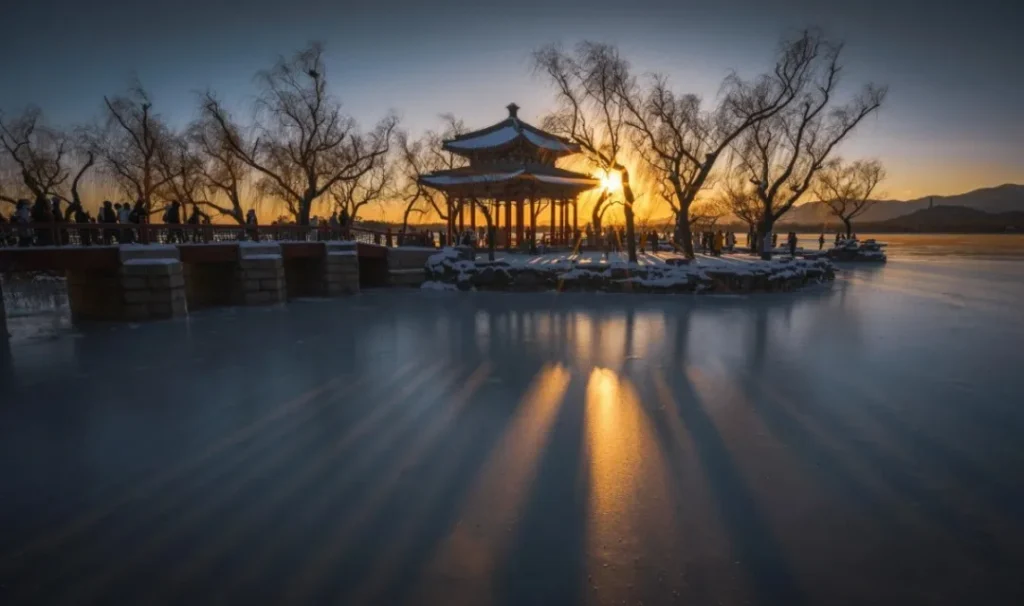
Suzhou Street
Along the shores of Kunming Lake in the Summer Palace, Suzhou Street seems to have stepped out of a painting of a Jiangnan water town. It ingeniously blends the classical with the modern, becoming a lively commercial hub within the Summer Palace. The architecture here follows the gentle style of Jiangnan water towns, with white walls and black tiles, small bridges, and flowing water, each detail exuding the charm of Jiangnan.
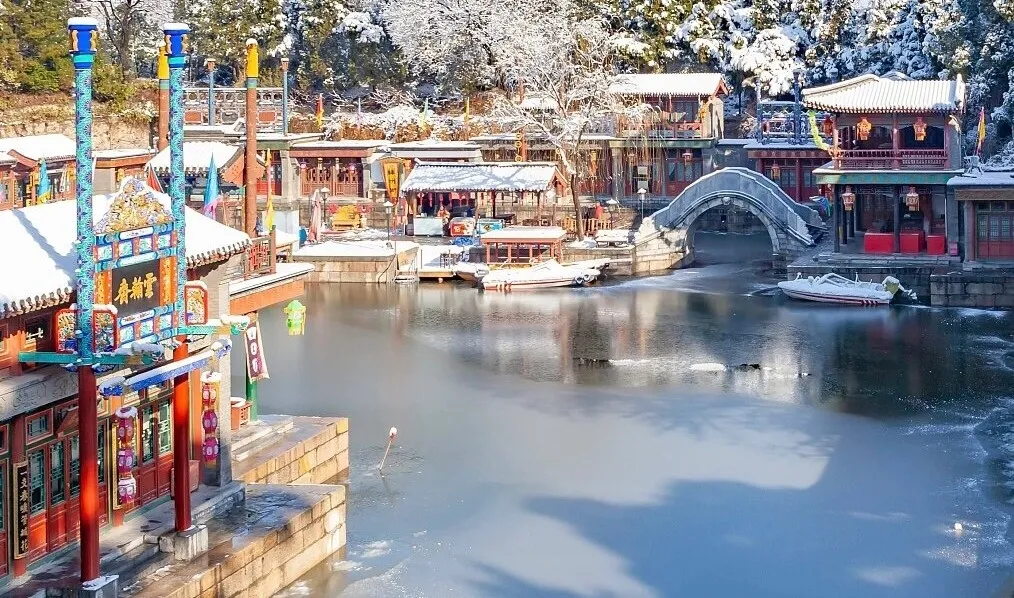
Garden of Harmonious Interests
Situated at the rear of Longevity Hill, the Garden of Harmonious Interests is a garden full of natural charm, featuring mountain springs, waterfalls, small bridges, and flowing water. It is a relatively tranquil corner within the Summer Palace.
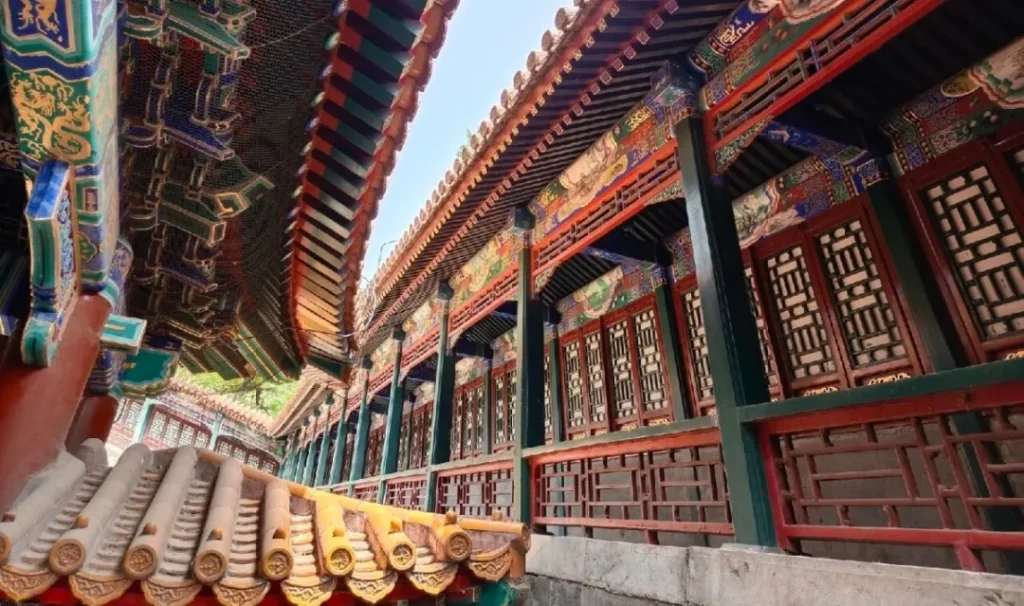
Hall of Dispelling Clouds
Located on the front slope of Longevity Hill, the Hall of Dispelling Clouds is one of the main palaces in the Summer Palace and was once the place where Empress Dowager Cixi handled official affairs.

Longevity Hill
As the main hill in the Summer Palace, Longevity Hill is home to several scenic spots, such as the Tower of Buddhist Incense and the Hall of Dispelling Clouds. At the foot of the hill lies Kunming Lake, creating a harmonious blend of mountains and water, offering a pleasant landscape.
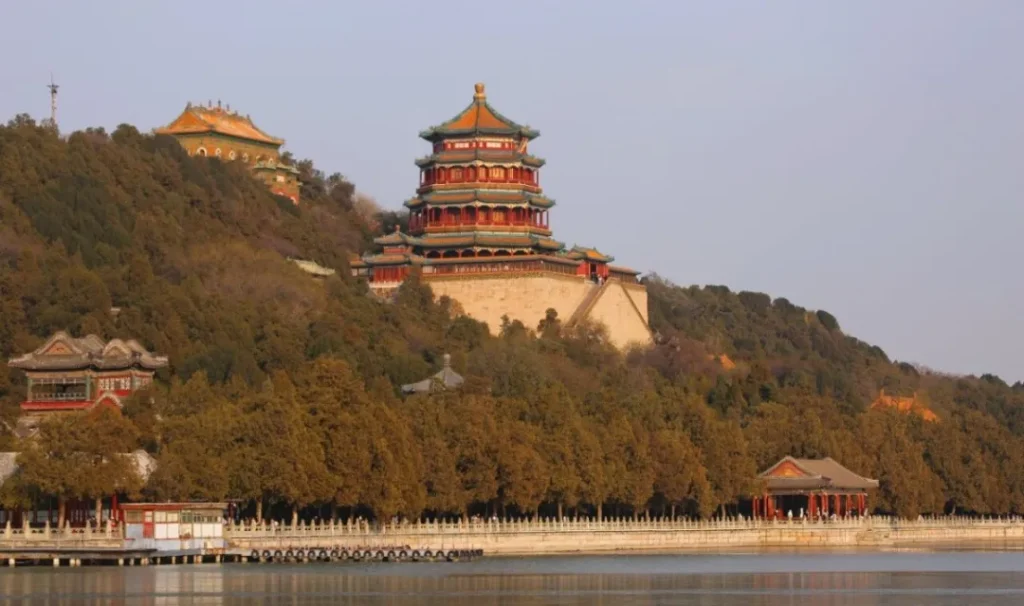
Nearby Attractions
Since you’re already here, why not explore the surrounding areas? After all, the attractions near the Summer Palace are equally filled with historical charm and cultural heritage. Here are some neighboring spots worth visiting:
Old Summer Palace (Yuanmingyuan) Ruins Park
To the southeast of the Summer Palace lies a once-glorious imperial garden that witnessed the splendor of the Qing Dynasty and experienced the ravages of war. Today, it has become a silent narrator of history. Visitors can wander through the ruins and touch the threads of history.
The reconstructed Western-style buildings, although unable to fully restore the past grandeur, are enough to let one imagine the magnificence of yesteryear. Here, one can quietly feel the passage of time and the vicissitudes of history.
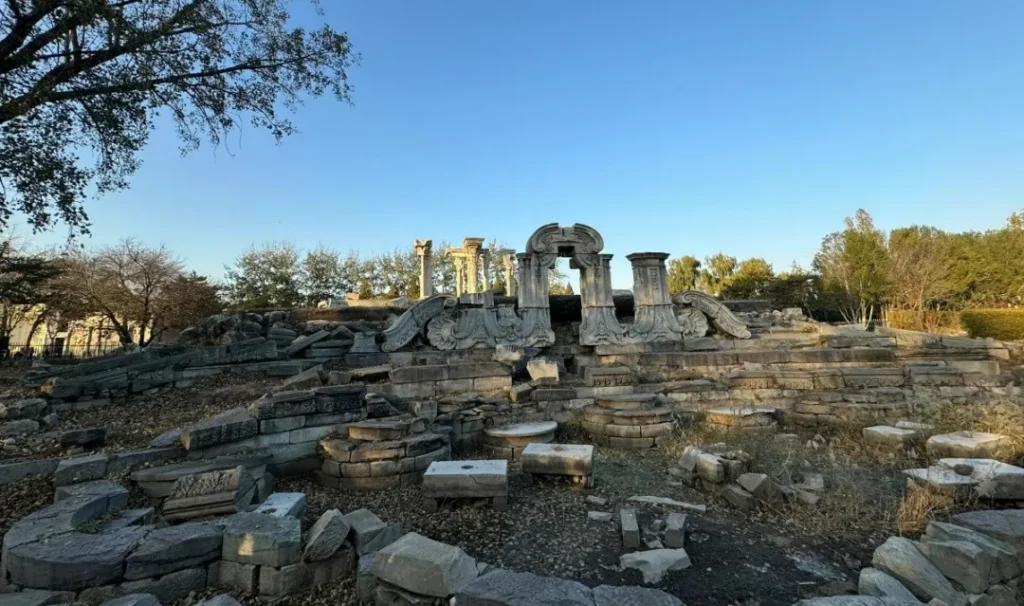
Fragrant Hills Park
Located to the northwest of the Summer Palace, Fragrant Hills Park is a famous spot in Beijing for admiring red leaves in autumn. However, visitors need not worry, as this park has a unique charm even in winter!
The trees are draped in a layer of silvery-white veil by the artful hands of nature, reflecting a dazzling radiance under the sunlight. Especially after a snowfall, the entire Fragrant Hills transforms into a tranquil and mysterious ink painting, adding a touch of poetry and dreaminess to the landscape.
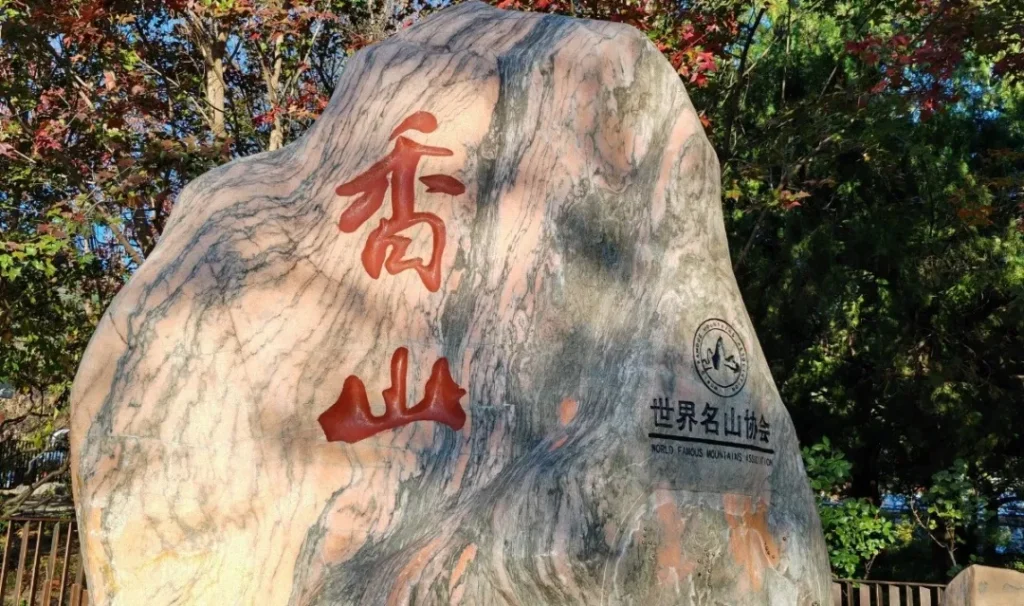
Beijing Botanical Garden
The Beijing Botanical Garden, a vibrant green treasure trove, attracts nature enthusiasts from around the world with its unparalleled plant diversity and ingeniously designed gardens. Here, rare plants are meticulously nurtured like precious gems, hailing from every corner of the Earth, weaving together a colorful ecological world.

Peking University
Located to the southwest of the Summer Palace, Peking University is one of China’s top institutions of higher learning. The scenic spots on campus, such as Weiming Lake and the Boya Tower, not only showcase the academic atmosphere but also serve as excellent places for tourists to understand modern Chinese education.


